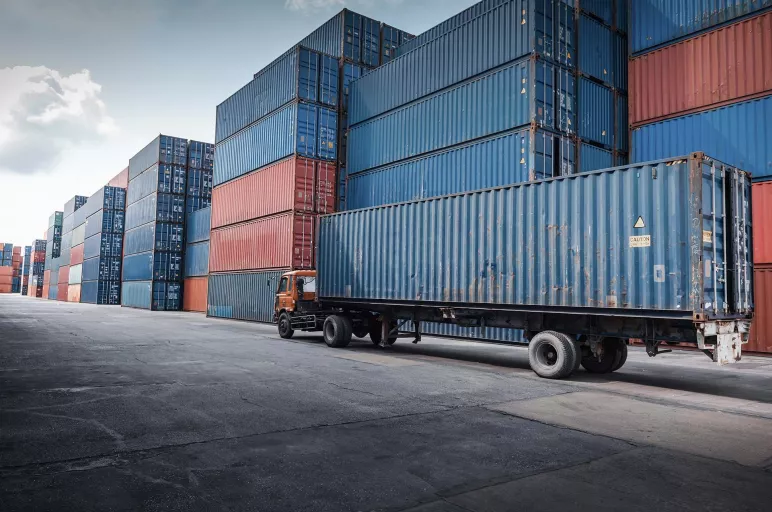
How Machine Learning Can Redefine Logistics Management
- ML in logistics can not only automate day-to-day operations but also enhance customer experience.
- From accurate demand forecasting and warehouse management to route optimization, ML can transform several functional areas.
- ML can also accelerate back-office operations by expediting the processing of invoices and bills.
September 26, 2023 | Supply Chain Software 4 minutes read
The adoption of technology is rapidly transforming supply chain operations. Nowhere is this transformation more apparent than in a function like logistics.
With rapid developments in machine learning, computing power and big data analytics, the adoption of artificial intelligence in logistics has gained momentum.
A key capability of machine learning that has expanded its application in several functions is the ability to learn on its own from previous outcomes and experience. This enhances the system’s accuracy as machine learning algorithms detect connections, patterns and trends in data.
Leading industry players are now streamlining processes by leveraging AI’s predictive capabilities and intelligent workflow automation. Many have invested heavily in technology to drive innovation and gain competitive advantage. While the incorporation of machine learning and artificial intelligence has the potential to transform end-to-end supply chain operations with data-driven decision-making, some functions are likely to benefit more than others.
Logistics is one such function that has found many possibilities of harnessing technology to not only automate day-to-day operations but also add more value and enhance customer experience while slashing costs at the same time.
Let’s now look at some functional areas in logistics where machine learning can make an impact.
Top Use Cases of Machine Learning in Logistics
1. Warehouse and Inventory Management:
Machine learning can automate warehouse operations, eliminating manual errors that lead to delays or lost shipments. Routine tasks such as picking, sorting and palletizing of goods are automated. It can also provide insights into inventory levels, stock availability, shipment timeframes and fulfillment rates. These insights can be used to streamline warehouse processes and maintain optimum inventory to prevent over and under-stocking. Machine learning can also be integrated with security camera analytics for real-time monitoring and alerts and take appropriate action to prevent unauthorized access.
2. Route Optimization:
By analyzing real-time data such as traffic patterns and distances, machine learning algorithms can suggest the most efficient route for delivery while minimizing driving time and emissions. When used with predictive analytics, they can also anticipate traffic congestions and disruptions due to bad weather and other unforeseen circumstances. Route optimization can rationalize the cost of last-mile delivery that is often a significant overhead for a logistics company.
3. Demand Planning and Forecasting:
Machine learning can improve demand planning by assessing market drivers in addition to historical data such as demographic, weather and current trends. It can also analyze data from real-time market events and risks along with point-of-sale data to improve forecast accuracy at granular level.
Accurate forecasts allow logistics companies to better prepare for sudden surges or drops in demand and proactively adjust operations. Short-term forecasts, which range from a few days to a few weeks, can influence operational planning and improve the bottom line.
For example, a short-term forecast can anticipate the demand of vehicles two weeks ahead with more than 98% accuracy. Medium to long-term forecasts can be used for budgeting and planning purchases of new assets.
4. Predictive Maintenance:
By collecting and analyzing data from onboard sensors and even road conditions, machine learning can identify upcoming maintenance requirements. Predictive maintenance allows logistics companies to avoid costly breakdowns and vehicle repairs by determining the most optimal time for servicing. This allows a logistics provider to proactively schedule maintenance during an off-peak period based on an estimate of the next malfunction and service date.
5. Quality Control:
Machine learning can recognize visual patterns and automate quality control processes in logistics centers. By quickly analyzing extensive datasets, it can enhance physical inspection and quality control and segregate packages containing damaged items. This helps a business address the issue of customers receiving damaged products and reduce instances of returns and replacements.
6. Fraud Detection:
Machine learning models can safeguard operations by detecting inconsistencies and triggering real-time alerts. It can also help detect new types of fraudulent activities that may not have been detected previously. Proactive identification of risks allows a business to effectively prevent fraud and potential customer data breaches.
7. Workforce Planning:
With an analysis of historical data of customer orders, shipment demand and traffic patterns, machine learning algorithms can accurately predict optimal delivery times. This information helps logistics companies to optimize workforce during peak periods and reduce staff and resources during off-peak periods.
Also Read: Data and Machine Learning are Transforming Supply Chain Management
In addition to the above use cases, machine learning can accelerate back-office operations. Document automation can expedite processing of invoices and bills by automating data input, processing as well as error reconciliation.
Finally, technology’s predictive capabilities can help improve customer experience. By gaining insights into customer behavior and buying patterns, it can predict what they may buy next or when they may cancel or return the product. Such capabilities allow a business to craft suitable marketing strategies and optimally price their products.



